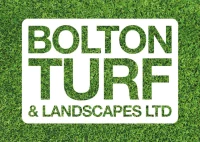A well-maintained patio not only enhances the look of your outdoor space but also provides a safe and pleasant area for relaxing or entertaining. Over time, patio slabs can accumulate dirt, moss, algae and those stubborn black spots that detract from their appearance. Cleaning your patio slabs regularly helps preserve their beauty and extends their lifespan. Here’s a comprehensive guide on how to clean patio slabs effectively, with special advice on getting rid of black spots.
Preparation and Basic Cleaning
Before diving into heavy-duty cleaning, start by clearing your patio of furniture, pots and debris. Sweep thoroughly with a stiff broom to remove loose dirt, leaves and dust. Removing this surface debris allows you to see the true condition of your slabs and target problem areas more precisely.
For general cleaning, use warm water mixed with a small amount of washing-up liquid. Apply this solution to the slabs with a mop or brush and scrub gently to lift dirt and grime. Rinse thoroughly with clean water to avoid slippery residue.
How to Get Rid of Black Spots on Patio
Black spots on patio slabs are commonly caused by algae, mildew or pollutants settling into the surface, especially in shaded or damp areas. These spots not only look unsightly but can make the slabs slippery and unsafe.
One effective way to tackle black spots is to use a solution of white vinegar and water. Mix one part vinegar with four parts water and apply it to the affected areas using a spray bottle or watering can. Leave it to soak for about 15 to 20 minutes, then scrub with a stiff brush. Vinegar naturally kills algae and mildew without harsh chemicals, making it an environmentally friendly choice. After scrubbing, rinse the area well with water.
For more stubborn black spots, baking soda can be used as a mild abrasive. Sprinkle baking soda over the spots, add a little water to create a paste, then scrub with a brush. Rinse thoroughly afterwards.
Using a Pressure Washer
A pressure washer is a powerful tool for cleaning patios, especially larger areas or heavily soiled slabs. It removes dirt, moss and algae quickly and effectively. However, it’s important to use the correct pressure setting and nozzle to avoid damaging the slabs or the joints.
Start with a low-pressure setting and keep the nozzle at least 30 centimetres from the surface. Work in sections and avoid focusing too long on one spot. After pressure washing, the slabs will look refreshed and clean, but you may need to repeat the process or use a chemical cleaner for stubborn stains.
Commercial Patio Cleaners
There are many commercial patio cleaning products available that can tackle tough stains and black spots. Look for cleaners specifically formulated for your type of patio material. Always follow manufacturer instructions carefully and wear protective gloves.
These products often contain stronger biocides or detergents, so use them sparingly and consider their environmental impact. It’s best to choose biodegradable and eco-friendly options when possible.
Preventing Future Build-Up
To keep your patio looking its best, regular maintenance is key. Sweep the patio weekly to prevent dirt accumulation and remove leaves promptly. Applying a sealant suitable for your slab material can protect against stains and make future cleaning easier.
Trimming back overhanging trees or shrubs improves sunlight and airflow, reducing dampness that encourages algae and moss growth.
In Summary
Cleaning patio slabs involves a combination of regular sweeping, gentle washing with washing-up liquid, and targeted treatments for black spots using vinegar or baking soda. Pressure washers and commercial cleaners provide deeper cleaning for stubborn dirt, but must be used with care. With consistent maintenance and preventative measures, your patio will remain a beautiful and safe outdoor space for years to come.


